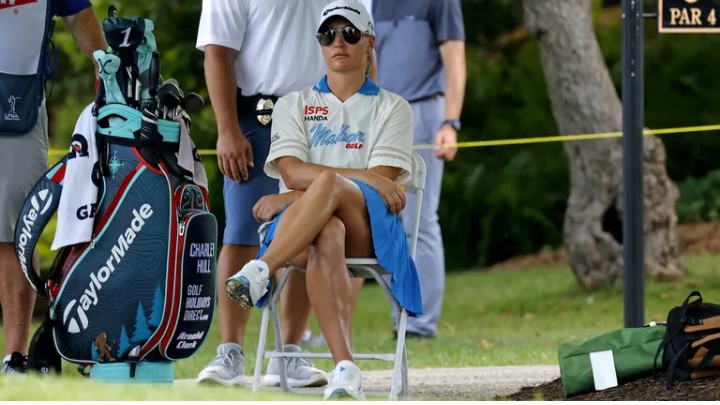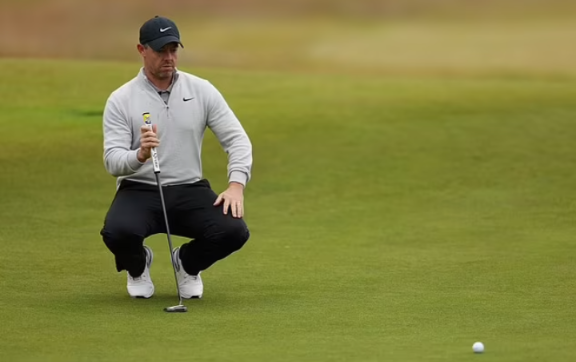“Why the ‘Keep Up with the Group in Front’ Rule is Ruining Your Golf Game”
Reconsidering the “Keep Up with the Group in Front” Mentality in Golf No one enjoys slow play on the golf course. It disrupts the flow, adds unnecessary waiting, and can dampen the overall experience. However, the age-old golfing principle of “keeping up with the group in front” is not a practical solution to slow play….
Reconsidering the “Keep Up with the Group in Front” Mentality in Golf
No one enjoys slow play on the golf course. It disrupts the flow, adds unnecessary waiting, and can dampen the overall experience. However, the age-old golfing principle of “keeping up with the group in front” is not a practical solution to slow play. It not only adds unnecessary stress but also fails to address the real issues causing delays on the course. It’s time we discard this outdated mantra and adopt a new one: “Don’t hold up the group behind.”
While attempting to maintain pace with the group ahead demonstrates an intention to help speed up play, it doesn’t always produce the desired results. Often, external factors out of your control contribute to slow play. For instance, what if the group in front is playing extremely slowly? Rushing to catch up with them will not improve the situation; it only adds unnecessary pressure to your own game.
On a crowded course where slow groups are common, forcing players to close the gap can cause more problems than it solves. In such circumstances, it might be more sensible to take a little extra time over each shot rather than hurriedly advancing toward a congested area ahead. Without proper pacing, frustration builds, and that frustration can lead to worse play—and ultimately, even slower rounds.
Many golf clubs contribute to these pacing problems by scheduling tee times too closely. Tee-time intervals as short as seven or eight minutes are common in many places, which leaves little room for spacing on the course. With groups packed tightly together, it only takes one slow group to bring the entire course to a standstill. Like a row of falling dominoes, when one group falls behind, the rest are bound to follow.
In such situations, golfers instinctively feel the need to play faster, especially when they see the group behind creeping up on them. But playing faster under stress rarely helps; in fact, it often causes mistakes that slow things down even more. Therefore, when a course is overcrowded, it doesn’t make sense to strain yourself to keep pace with the group in front. They’re likely experiencing the same challenges, and the pressure to rush only worsens the overall play for everyone.
On the other hand, when the course is quieter, keeping up with the group ahead also serves little purpose. If the spacing allows for comfortable play without rushing, why feel the need to rush unnecessarily? This is why I believe that instead of pushing to catch up with the group ahead, the focus should be on not holding up the group behind.
As long as the course isn’t jam-packed, and assuming groups are generally similar in size, there’s no need to rush your game just to match the pace of the group in front. Pushing yourself to play faster than your natural rhythm can ruin the enjoyment of the round, and often it’s entirely unnecessary.
Variability in Golf Groups
The primary issue with the “keep up with the group in front” rule is that it assumes too much uniformity across all groups. The reality is that groups vary greatly in terms of size, skill level, and purpose for playing.
Consider the difference between a four-ball group and a three-ball group. It’s unrealistic to expect a foursome to maintain the same pace as a threesome, given that they have more players and, naturally, will take a little longer. Should the foursome compromise their enjoyment of the game just to match the pace of a smaller group?
Golfers should always show respect for others on the course, but that doesn’t mean they need to rush their game. Whether you’re paying a green fee or are a club member, you’ve paid for the right to be there and enjoy your round. So, while being mindful of slow-play etiquette, such as keeping pre-shot routines efficient and being conscious of where you leave your bag, golfers should still feel free to play at their own comfortable pace. As long as you’re not holding up the group behind, there’s no need to speed up unnecessarily.
Personal Experience: Unnecessary Pressure on the Course
A recent experience at a prestigious golf club highlighted the frustrations caused by this outdated rule. My playing partner and I had been enjoying a solid round, but we both encountered trouble on the fifth hole, which delayed us slightly. By the time we reached the sixth tee, the two-ball group behind us had just finished playing the fifth green. One of the players immediately told us—without any pleasantries or introductions—that we needed to keep up with the group in front because the club captain was playing behind them.
This comment irked me for several reasons. First, it was rude. Second, the group in front consisted of two highly skilled players moving at an extremely fast pace; we were never going to match them. And finally, I couldn’t have cared less about the club captain being behind us—he wasn’t a deity to be revered, after all.
Although we hadn’t caused any delays for the group behind us, the pressure from that brief exchange affected our game. Both my partner and I had a poor showing on the sixth hole, no doubt due to the stress caused by the unnecessary intervention. It was frustrating because, as mid-handicap players, we naturally take longer than a pair of low-handicap golfers.
Variations in Pace: A Common Reality
Golfers play at different speeds for various reasons. Two groups may have players of similar skill levels, but external factors can still influence their pace. One group may be in a rush due to other commitments, while the other may have no time pressures at all. Some players might have told their family they would be home in four hours, even though that might not have been a realistic expectation. It’s natural that these differences will affect pace of play.
Similarly, with the rise of new golfing formats, such as iGolf, some groups might be playing competitively, turning in scorecards, while others might just be enjoying a casual round. A group that’s less concerned with their score is likely to play faster, while those putting in a card will naturally take more time.
Golf isn’t a one-size-fits-all experience. Players have different goals, skill levels, and motivations on any given day. A simplistic rule like “keep up with the group in front” doesn’t account for these realities. Instead of stressing over maintaining pace with the group ahead, we should focus on our own game and, as long as we’re not holding up the group behind, enjoy the round at a comfortable pace.






